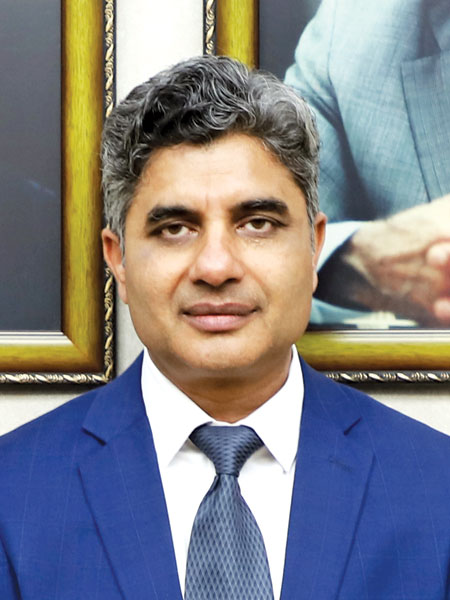Bridges and flyovers are critical structures for an integrated infrastructure development strategy
Infrastructure is the key driving force of our economy largely propelling India's overall development whilst improving the quality of life for its citizens. In a developing economy, having an efficient transportation network by way of robust roads and bridges would therefore be imperative to growth and prosperity. There is a tremendous focus from the government on this sector given its strategic importance and impact on allied industries to catapult the GDP through the multiplier effect. The National Infrastructure Pipeline programme is a great leap forward by the Government of India in boosting the nation's public transport system through increased public and private investments.

Devendra Kumar Sharma
Executive Vice President & BU Head - Roads, Bridges, Ports & Nuclear Tata Projects Ltd
How do you look at the prevailing scenario in bridges & flyovers segment in the backdrop of the National Infrastructure Pipeline programme?
Infrastructure is the key driving force of our economy largely propelling India's overall development whilst improving the quality of life for its citizens. In a developing economy, having an efficient transportation network by way of robust roads and bridges would therefore be imperative to growth and prosperity. There is a tremendous focus from the government on this sector given its strategic importance and impact on allied industries to catapult the GDP through the multiplier effect. The National Infrastructure Pipeline programme is a great leap forward by the Government of India in boosting the nation's public transport system through increased public and private investments.
Bridges and flyovers are critical structures for an integrated infrastructure development strategy as they provide seamless and unhindered routes along with enhanced land utilization. They help decongest traffic, optimize travel time and thereby improve the quality of life of citizens.
Can you provide us a brief overview of the ongoing bridge/flyover projects of Tata Projects? What are the latest technologies and methods adopted by the company for the faster and efficient execution of the projects?
Tata Projects is contributing towards the national infrastructure development by executing complex EPC projects in various sectors including Transportation. In the Roads and Bridges sector, we have successfully delivered projects like the Karimnagar Cable Stay Bridge and the Kishangarh-Udaipur-Ahmedabad-III Highway Project recently. In Western India, we are executing Package 2 of the 21.8 km Mumbai Trans Harbour Link (MTHL) project connecting Sewri, in mainland Mumbai to Nhava Sheva, in Navi Mumbai. In Southern India, we are executing Section 1 of the Chennai Peripheral Ring Road (CPRR) Project, a Greenfield Expressway which includes multiple bridges and flyovers.
Tata Projects strives for on-time delivery of all our projects with due regard to safety, quality and sustainability. For faster, efficient and environment-friendly construction, we are enhancing the use of precast construction. We are also using specialized equipment
for scaffolding works, formwork erection as well as piling works that has helped us achieve better cycle times to keep up with the project pace. In our MTHL Project, we are using sophisticated marine equipment to drive the progress of works in a challenging environment. As a Tata Group company, we are committed to bring in the best technology & best-in-class practices across all our projects leading to value creation for stakeholders by demonstrating high quality, safe and rapid project execution, whilst enriching customer satisfaction.
What is your outlook on the future of bridges and flyovers in the country?
The government through its various initiatives and policies is conceptualizing cable stay bridge projects, sea-links and coastal roads etc, for collective development of the region. There is future development planning via high-level investments, liquidity reinforcements and significant policy support in this sector. There is great potential for both the public and private sector to play a critical role in development of this strategic infrastructure for multi-fold growth of the nation.
Hits: 5







